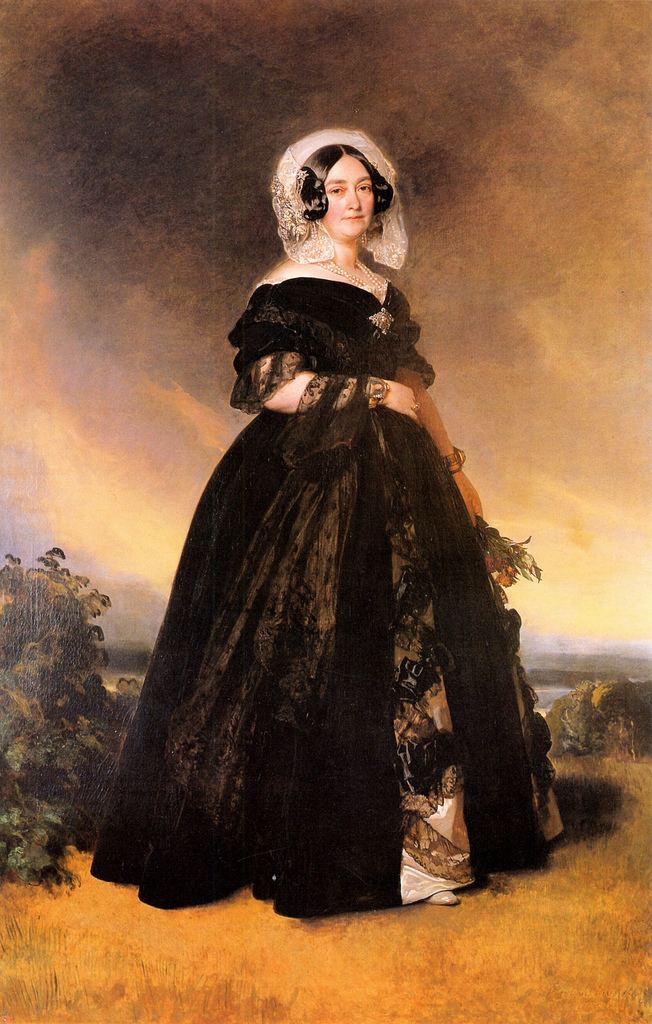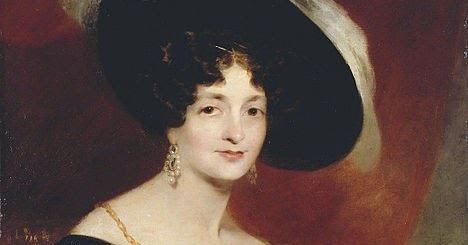Name Princess of | ||
 | ||
Issue with Prince Emich Carl:Carl, 3rd Prince of LeiningenFeodora, Princess of Hohenlohe-Langenburgwith Prince Edward:Victoria, Queen of the United Kingdom Died March 16, 1861, Frog House, United Kingdom Children Queen Victoria, Princess Feodora of Leiningen, Carl, 3rd Prince of Leiningen Parents Countess Augusta Reuss of Ebersdorf, Francis, Duke of Saxe-Coburg-Saalfeld Spouse Prince Edward, Duke of Kent and Strathearn (m. 1818), Emich Carl, 2nd Prince of Leiningen (m. 1803) Similar People Queen Victoria, Countess Augusta Reuss of, Victoria - Princess Royal, Princess Feodora of Leiningen, Albert - Prince Consort | ||
Princess Victoria of Saxe Coburg Saalfeld, 1786–1861 Mother to Queen Victoria
Princess Victoria of Saxe-Coburg-Saalfeld (17 August 1786 – 16 March 1861), later Duchess of Kent and Strathearn, was a German princess and the mother of Queen Victoria of the United Kingdom. As the widow of Charles, Prince of Leiningen (1763–1814), from 1814 she served as regent of the Principality during the minority of her son from her first marriage, Carl, until her second wedding in 1818.
Contents
- Princess Victoria of Saxe Coburg Saalfeld 17861861 Mother to Queen Victoria
- Early life
- First marriage
- Regency
- Second marriage
- Widowhood
- Royal feud
- Reconciliation
- Rumours of affairs
- Death
- Portrayal
- References

Early life

Victoria was born in Coburg on 17 August 1786 in the Holy Roman Empire of the German Nation. She was the fourth daughter and seventh child of Franz Frederick Anton, Duke of Saxe-Coburg-Saalfeld, and Countess Augusta of Reuss-Ebersdorf. She had a rough childhood growing up with her brothers and sisters. One of her brothers was Ernest I, Duke of Saxe-Coburg-Gotha, and another brother, Leopold, married, in 1816, Princess Charlotte of Wales, the only legitimate daughter of the future King George IV, and heiress presumptive to the British throne.
First marriage

On 21 December 1803 at Coburg, a young Victoria married (as his second wife) Charles, Prince of Leiningen (1763–1814), whose first wife, Henrietta of Reuss-Ebersdorf, had been her aunt. The couple had two children, Prince Carl and Princess Feodora of Leiningen.

Through her first marriage, she is a direct matrilineal ancestor to various members of royalty in Europe, including Carl XVI Gustaf of Sweden, Felipe VI of Spain, and Constantine II of Greece.
Regency
After the death of her first spouse, she served as regent of the Principality of Leiningen during the minority of their son, Carl.
Second marriage
The death in 1817 of Princess Charlotte of Wales, the wife of Victoria's brother Leopold, prompted a succession crisis. With Parliament offering them a financial incentive, three of Charlotte's uncles, sons of George III, were prepared to marry. One of them, Prince Edward, Duke of Kent and Strathearn (1767–1820) proposed to Victoria and she accepted. The couple were married on 29 May 1818 at Amorbach and on 11 July 1818 at Kew, a joint ceremony at which Edward's brother, the Duke of Clarence, later King William IV, married Princess Adelaide of Saxe-Meiningen. Shortly after the marriages, the Kents moved to Germany, where the cost of living would be cheaper. Soon after, Victoria became pregnant, and the Duke and Duchess, determined to have their child born in England, raced back, arriving at Dover on 23 April 1819, and moved into Kensington Palace, where she soon gave birth to a daughter, Princess Alexandrina Victoria of Kent.
Widowhood
The Duke of Kent died suddenly of pneumonia in January 1820, six days before his father, King George III. His widow the Duchess had little cause to remain in the United Kingdom, since she did not speak the language and had a palace at home in Coburg where she could live cheaply on the revenues of her first husband. However, the British succession at this time was far from assured – of the three brothers older than Edward, the new king, George IV, and the Duke of York were both estranged from their wives, who were in any case past childbearing age. The third brother, the Duke of Clarence, had yet to produce any surviving children with his wife. The Duchess of Kent decided that she would do better by gambling on her daughter's accession than by living quietly in Coburg, and having inherited her second husband's debts, sought support from the British government. After the death of Edward and his father, the young Princess Victoria was still only third in line for the throne, and Parliament was not inclined to support yet more impoverished royalty.
The provision made for Duchess of Kent was mean: she resided in a suite of rooms in the dilapidated Kensington Palace, along with several other impoverished members of the royal family, and received little financial support from the Civil List, since Parliament had vivid memories of the late Duke's extravagance. In practice, a main source of support for her was her brother, Leopold. The latter had a huge income of fifty thousand pounds per annum for life, representing an annuity allotted to him by the British Parliament on his marriage to Princess Charlotte, which had made him seem likely to become in due course the consort of the monarch. Even after Charlotte's death, Leopold's annuity was not revoked by Parliament.
In 1831, with George IV dead and the new king, William IV, over 60 and still without legitimate issue, the young princess's status as heir presumptive and the Duchess's prospective place as regent led to major increases in British state income for the Kents. A contributing factor was Leopold's designation as King of the Belgians, upon which he surrendered his British income. In any case, the idea of having the British heir presumptive supported by a foreign sovereign would clearly have been unacceptable.
Royal feud
The Duchess relied heavily on Sir John Conroy, whom she engaged as her private secretary. Perhaps because of Conroy's influence, the relationship between the Duchess's household and King William IV soon soured, with the Duchess regarding the king as an oversexed oaf. As far as she dared, the Duchess denied the King access to his niece. She further offended the King by taking rooms in Kensington Palace that the King had reserved for himself. Both before and during William's reign, she snubbed his illegitimate children, the FitzClarences. All of this led to a scene at a dinner in 1836 when the King, again feeling offended by the Duchess and Conroy, expressed the hope that he would live long enough to render a regency for Victoria unnecessary, and regretted the influence exercized on the heir presumptive by those who surrounded her.
Conroy had high hopes for his patroness and himself: he envisaged Victoria succeeding the throne at a young age, thus needing a regency government, which, following the Regency Act of 1831, would be headed by the princess's mother (who had already served in that capacity in Germany following the death of her first husband). As the personal secretary of the Duchess, Conroy would be the veritable "power behind the throne". He had not counted on William IV surviving long enough for Victoria to succeed to the throne as an adult and consequently, while cultivating her mother, had shown little consideration for Victoria. When the latter succeeded, Conroy risked having no influence over her. He tried to force Victoria to agree to make him her personal secretary once she succeeded, but this plan, too, backfired. Victoria resented her mother's support for Conroy's schemes and being pressured by her to sign a paper declaring Conroy her personal secretary. The result was that when Victoria became queen, she relegated the Duchess to separate accommodation, away from her own.
Reconciliation
When the Queen's first child, the Princess Royal, was born, the Duchess of Kent unexpectedly found herself welcomed back into Victoria's inner circle. It is likely that this came about as a result of the dismissal of Baroness Lehzen at the behest of Victoria's husband (and the Duchess's nephew), Prince Albert. Firstly, this removed Lehzen's influence, and Lehzen had long despised the Duchess and Conroy, suspecting them of an illicit affair. Secondly, it left the Queen wholly open to Albert's influence, and he likely prevailed upon her to reconcile with her mother. Thirdly, Conroy by now lived in exile on the Continent and so his divisive influence was removed. The Duchess's finances, which had been left in shambles by Conroy, were restored thanks to Victoria and her advisors. By all accounts, the Duchess became a doting grandmother and was closer to her daughter than she ever had been.
Rumours of affairs
There has been some speculation, not only that the Duchess and Conroy were lovers, but that the Duchess had earlier been unfaithful to the Duke of Kent and that Victoria was not his daughter. This has been promoted most prominently by William and Malcolm Potts' 1995 book Queen Victoria's Gene. Those who promote this position point to the absence of porphyria in the British Royal Family among the descendants of Queen Victoria - it had been widespread before her; and haemophilia, unknown in either the Duke's or Duchess's family, had arisen among the best documented families in history. Victoria herself was puzzled by the emergence of the disease, given its absence in either family.
In practice, this would have required the Duchess's lover to be haemophiliac – an extremely unlikely survival, given the poor state of medicine at the time, or the Duchess herself to be a carrier of haemophilia, since haemophilia is X-linked, meaning that her mother would have been a carrier, if haemophilia was not otherwise previously expressed in the Duchess's parents. Actual evidence to support this theory has not arisen, and haemophilia occurs spontaneously through mutation in at least 30% of cases. Queen Victoria has also been said by some to have a strong resemblance to her Hanoverian relatives, particularly George IV.
John Röhl's book, Purple Secret, documents evidence of porphyria in Victoria, the Princess Royal's daughter Charlotte and her grand daughter, Feodore. It goes on to say that Prince William of Gloucester was diagnosed with porphyria shortly before he died in a flying accident.
Death
The Duchess died at 09:30 on 16 March 1861, aged 74 years. She is buried in the Duchess of Kent's Mausoleum at Frogmore, Windsor Home Park, near to the royal residence Windsor Castle.
Queen Victoria and Albert dedicated a window in the Royal Chapel of All Saints in Windsor Great Park to her memory.
The Queen was much affected by her mother's death. It was the start to a disastrous year, which would end with Albert's death.
Portrayal
Princess Victoria of Saxe-Coburg-Saalfeld was portrayed by Alison Leggatt in the ATV drama Edward the Seventh, by Penelope Wilton in the 2001 television serial Victoria and Albert, by Miranda Richardson in the 2009 film The Young Victoria, and by Catherine Flemming in the 2016 ITV series Victoria.
